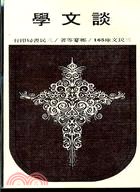The Public Relations Writer'S Handbook, Second Edition: The Digital Age
商品資訊
ISBN13:9780787986315
出版社:John Wiley & Sons Inc
作者:Aronson
譯者:CAROL AMES
出版日:2007/03/14
裝訂/頁數:精裝/368頁
規格:22.9cm*15.2cm*2.5cm (高/寬/厚)
版次:2
商品簡介
作者簡介
名人/編輯推薦
目次
相關商品
商品簡介
The second edition of the Public Relations Writer's Handbook offers a simple, step-by-step approach to creating a wide range of writing, from basic news releases, pitch letters, biographies, and media alerts, to more complex and sophisticated speeches, media campaign proposals, crisis responses, and in-house publications. In addition, the thoroughly expanded and updated second edition shows how to keep up with the best practices of the public relations profession, as well as with the speed made possible and required by the digital age.
作者簡介
Merry Aronson is the founder and director of MerryMedia, a Los Angeles–based entertainment marketing and PR firm. She has worked as a journalist, entertainment publicist, and network television promotion executive, and has taught PR writing at New York University and University of California, Los Angeles.
Don Spetner is senior vice president for Global Meeting and Communications at Korn/Ferry International. He was named an "Industry All Star" by Inside PR magazine, and his essays on communications have been published in The Journal of Corporate Public Relations and PRWeek.
Carol Ames teaches entertainment studies and public relations on the faculty of California State University, Fullerton. She is an experienced independent public relations professional and executive producer of movies for television.
Don Spetner is senior vice president for Global Meeting and Communications at Korn/Ferry International. He was named an "Industry All Star" by Inside PR magazine, and his essays on communications have been published in The Journal of Corporate Public Relations and PRWeek.
Carol Ames teaches entertainment studies and public relations on the faculty of California State University, Fullerton. She is an experienced independent public relations professional and executive producer of movies for television.
名人/編輯推薦
“Essential for any PR professional. Well written and easy to understand.”
--Richard Edelman, president and CEO, Edelman Public Relations Worldwide
“Despite all the rapid advances in technology, good writing is still the key to effective communications. And good writing comes from clear thinking. This book provides an excellent, step-by-step approach to both.”--Jon Iwata, senior vice president, Communications, IBM
“Good writing is still at the core of all great communications campaigns, and this book provides aspiring and experienced practitioners with practical guidelines and effective approaches to consider.”--Andy Polansky, president, Weber Shandwick Worldwide
“This is a practical, direct, and easy-to-use handbook for public relations writing, authored by top communications professionals. It’s a must-read for anyone serious about a successful career in public relations.”--Carl Folta, executive vice president, Corporate Communications, Viacom, Inc.
“This book offers no-nonsense, straight-ahead advice on how to compete and win in today’s digital world of public relations.”-- Paula D. Woodley, lecturer, Annenberg School for Communications, University of Southern California
--Richard Edelman, president and CEO, Edelman Public Relations Worldwide
“Despite all the rapid advances in technology, good writing is still the key to effective communications. And good writing comes from clear thinking. This book provides an excellent, step-by-step approach to both.”--Jon Iwata, senior vice president, Communications, IBM
“Good writing is still at the core of all great communications campaigns, and this book provides aspiring and experienced practitioners with practical guidelines and effective approaches to consider.”--Andy Polansky, president, Weber Shandwick Worldwide
“This is a practical, direct, and easy-to-use handbook for public relations writing, authored by top communications professionals. It’s a must-read for anyone serious about a successful career in public relations.”--Carl Folta, executive vice president, Corporate Communications, Viacom, Inc.
“This book offers no-nonsense, straight-ahead advice on how to compete and win in today’s digital world of public relations.”-- Paula D. Woodley, lecturer, Annenberg School for Communications, University of Southern California
目次
Introduction.
1. Public Relations Goes Digital ~MS.
A Few Words About the Truth.
A Few Words About Grammar.
E-Mail Is Not Private; E-Mail Is Forever.
A Few Words About Style.
Chapter Recap.
2. News Releases, Photo Captions, and Media Kits: Making Your Story Newsworthy.
Inverted-Pyramid News Style.
Trade Versus Consumer Press.
Adjusting Your Style: Consumer Versus Trade.
Before You Write.
Research.
Conforming to a Standard Style.
Content.
The Appointment Release.
The Product Release.
Lifestyle, Trend, and Survey Releases.
Localizing a National Release.
The Delayed or Feature-Style Lead.
Quotations.
Photos, Samples, and Review Copies.
Style and Form.
The Q&A.
Photos.
Media Kits.
Approvals.
Chapter Recap.
3. The Pitch: Creating Media Interest.
Stage One: Analyze the Subject, and Identify the Target.
Stage Two: Call the Editor.
Stage Three: Write Your Pitch.
Stage Four: Follow Up.
Chapter Recap.
4. The Biography and Backgrounder: Bringing Your Subject to Life.
Biographies.
Obituaries.
Backgrounders.
Writing the Bio.
Fact Sheets.
Time Lines.
Bibliographies.
Chapter Recap.
5. Speech Writing: From Your Pen to Their Lips.
Speech Writing I: Eleven Steps.
Speech Writing II: Technical Guidelines.
Chapter Recap.
6. Multimedia and PowerPoint Presentations.
Illuminating Difficult Subjects.
The Script.
Coordinating Text and Slides.
Impact and Continuity.
Putting It All Together: Rehearsal.
Audiovisual Presentations.
Chapter Recap.
7. Writing for Broadcast: Communicating with Video and Sound.
Pitch Letters and News Releases.
Creating Scripts for Electronic Media Kits.
Chapter Recap.
8. Special Events: The Art of Getting Noticed.
News Conference.
Press Junket.
Publicity Tour.
Chapter Recap.
9. Financial Writing.
Learn the Basics of Business.
Follow SEC Reporting Requirements.
Confidentiality and Insider Trading.
Regulation FD (Fair Disclosure).
Investor Relations Department.
Plain English: The Official Style of the SEC.
Business Release.
Quarterly Earnings Release.
Quarterly Conference Call.
Annual Report.
Annual Meeting.
Chapter Recap.
10. Publications: The Editorial Stage.
Editorial Considerations.
Newsletters.
Corporate Brochures.
Assigning Stories.
Establishing Editorial Guidelines.
Other Concerns: Format, Timeliness, Style, Approvals, and Copyright.
Production.
Files and File Copies.
Chapter Recap.
11. Writing for the Internet.
E-Mail, Instant Messaging, Paging, and Wireless Internet.
Web Sites.
Blogs and the Blogosphere.
Chapter Recap.
12. Responsive Writing: Setting the Record Straight.
Letters to the Editor.
Web Responses.
Guest Editorials.
Chapter Recap.
13. Crisis Communications and Official Statements:Preparing for a Crisis.
Official Statements.
Talking Points.
Crisis Media Plan.
Anticipating Needs in a Crisis.
Disclosure.
Crisis Releases.
Minimizing Negative Reports.
Threatened or Ongoing Litigation / Chapter Recap.
14. Program Writing: Selling Your Concept to the Client.
Structure of a Public Relations Program.
Introduction or Situation Analysis.
Objectives.
Target Audiences.
Strategies.
Activities.
Management, Staffing, Administration, Tracking, and Evaluation.
Budget.
Chapter Recap.
Appendix A: Research and Interview Techniques.
Appendix B: Grammar References.
Glossary.
References.
Index.
1. Public Relations Goes Digital ~MS.
A Few Words About the Truth.
A Few Words About Grammar.
E-Mail Is Not Private; E-Mail Is Forever.
A Few Words About Style.
Chapter Recap.
2. News Releases, Photo Captions, and Media Kits: Making Your Story Newsworthy.
Inverted-Pyramid News Style.
Trade Versus Consumer Press.
Adjusting Your Style: Consumer Versus Trade.
Before You Write.
Research.
Conforming to a Standard Style.
Content.
The Appointment Release.
The Product Release.
Lifestyle, Trend, and Survey Releases.
Localizing a National Release.
The Delayed or Feature-Style Lead.
Quotations.
Photos, Samples, and Review Copies.
Style and Form.
The Q&A.
Photos.
Media Kits.
Approvals.
Chapter Recap.
3. The Pitch: Creating Media Interest.
Stage One: Analyze the Subject, and Identify the Target.
Stage Two: Call the Editor.
Stage Three: Write Your Pitch.
Stage Four: Follow Up.
Chapter Recap.
4. The Biography and Backgrounder: Bringing Your Subject to Life.
Biographies.
Obituaries.
Backgrounders.
Writing the Bio.
Fact Sheets.
Time Lines.
Bibliographies.
Chapter Recap.
5. Speech Writing: From Your Pen to Their Lips.
Speech Writing I: Eleven Steps.
Speech Writing II: Technical Guidelines.
Chapter Recap.
6. Multimedia and PowerPoint Presentations.
Illuminating Difficult Subjects.
The Script.
Coordinating Text and Slides.
Impact and Continuity.
Putting It All Together: Rehearsal.
Audiovisual Presentations.
Chapter Recap.
7. Writing for Broadcast: Communicating with Video and Sound.
Pitch Letters and News Releases.
Creating Scripts for Electronic Media Kits.
Chapter Recap.
8. Special Events: The Art of Getting Noticed.
News Conference.
Press Junket.
Publicity Tour.
Chapter Recap.
9. Financial Writing.
Learn the Basics of Business.
Follow SEC Reporting Requirements.
Confidentiality and Insider Trading.
Regulation FD (Fair Disclosure).
Investor Relations Department.
Plain English: The Official Style of the SEC.
Business Release.
Quarterly Earnings Release.
Quarterly Conference Call.
Annual Report.
Annual Meeting.
Chapter Recap.
10. Publications: The Editorial Stage.
Editorial Considerations.
Newsletters.
Corporate Brochures.
Assigning Stories.
Establishing Editorial Guidelines.
Other Concerns: Format, Timeliness, Style, Approvals, and Copyright.
Production.
Files and File Copies.
Chapter Recap.
11. Writing for the Internet.
E-Mail, Instant Messaging, Paging, and Wireless Internet.
Web Sites.
Blogs and the Blogosphere.
Chapter Recap.
12. Responsive Writing: Setting the Record Straight.
Letters to the Editor.
Web Responses.
Guest Editorials.
Chapter Recap.
13. Crisis Communications and Official Statements:Preparing for a Crisis.
Official Statements.
Talking Points.
Crisis Media Plan.
Anticipating Needs in a Crisis.
Disclosure.
Crisis Releases.
Minimizing Negative Reports.
Threatened or Ongoing Litigation / Chapter Recap.
14. Program Writing: Selling Your Concept to the Client.
Structure of a Public Relations Program.
Introduction or Situation Analysis.
Objectives.
Target Audiences.
Strategies.
Activities.
Management, Staffing, Administration, Tracking, and Evaluation.
Budget.
Chapter Recap.
Appendix A: Research and Interview Techniques.
Appendix B: Grammar References.
Glossary.
References.
Index.
主題書展
更多
主題書展
更多書展今日66折
您曾經瀏覽過的商品
購物須知
外文書商品之書封,為出版社提供之樣本。實際出貨商品,以出版社所提供之現有版本為主。部份書籍,因出版社供應狀況特殊,匯率將依實際狀況做調整。
無庫存之商品,在您完成訂單程序之後,將以空運的方式為你下單調貨。為了縮短等待的時間,建議您將外文書與其他商品分開下單,以獲得最快的取貨速度,平均調貨時間為1~2個月。
為了保護您的權益,「三民網路書店」提供會員七日商品鑑賞期(收到商品為起始日)。
若要辦理退貨,請在商品鑑賞期內寄回,且商品必須是全新狀態與完整包裝(商品、附件、發票、隨貨贈品等)否則恕不接受退貨。
























